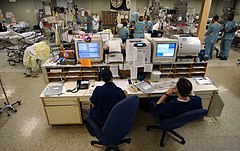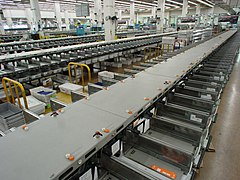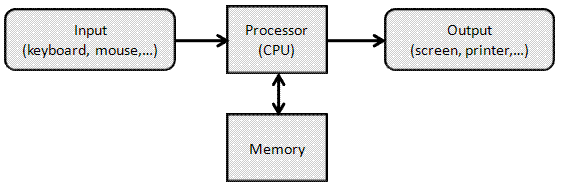






2.1. Introduction to Computers
What is a computer?
Definitions
A computer is a machine that manipulates data according to a list of instructions called a program.
A computer can also be defined as an electronic machine that accepts input (data), processes it and gives out results (information). A program or app (short for application program) in memory manages the processing. It can make use of data or information stored in memory and remember the results of the processing for later use, again in memory.
A computer is also a (fairly complicated) tool intended to assist the user in accomplishing information-based tasks ranging from locating and acquiring data/information to to processing it to presenting or transmitting it.
In addition, it is an entertainment center allowing the user to browse the web, read a book, play a video game, watch a movie, etc. These devices (and the following) are often left out of the definition of a computer because they are not "general purpose" computing devices, that is, a Kindle (tm) is used to read books, but not to create a classroom presentation. They are included here because the lines separating such devices are becoming blurry.
In certain specialized instances, such as embedded real-time computers (as found in your car or microwave), it is part of a more complex tool or device.
In a sense, a computer is ultimately a simple, generic device that can be used to accomplish a wide variety of tasks. This leads to the first two generic definitions provided above.
A Computer-based system [src]
A computer-based system is a system in which a computer is involved and consists of three major elements: Hardware, Software, and User (where the user may be another computer system). The elements of a computer based system are described in the three following scenarios:
- Patient monitoring system
- Hardware
- Electrode leads, Micro computers, Network platform, and a Server Computer
- Software
- Monitoring Application, Database, and Operating System
- User
- Medical staff, Administrators
- Controlling a section of an Assembly Line
- Hardware
- A specially embedded system which is developed for this purpose
- Software
- The machine code loaded on the embedded system Memory
- User
- Other Machine, Supervisor
- Playing a game with a Computer
- Hardware
- Game console such as XBox, Playstation
- Software
- The game itself
- User
- The game player

Hospital ICU monitoring system
public domain image

Mail sorting assembly line
By Jason V [CC-BY-SA-2.0], via Wikimedia Commons

Game system
public domain image








